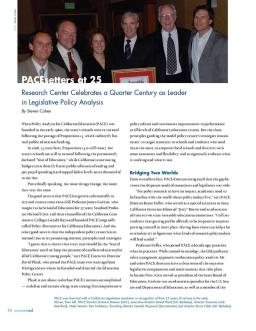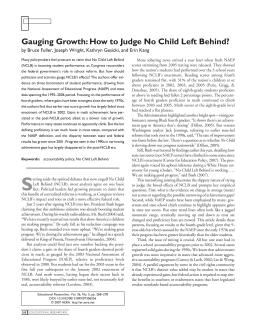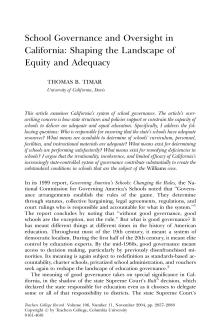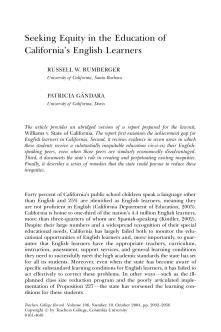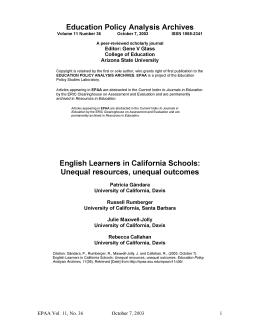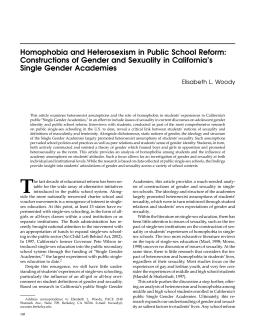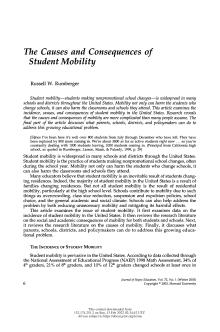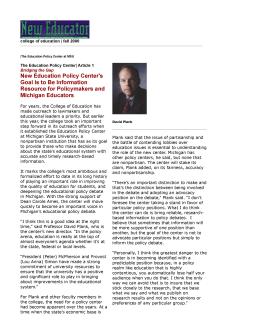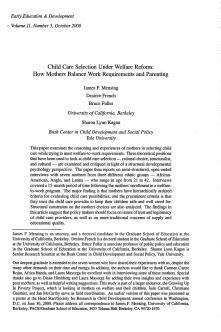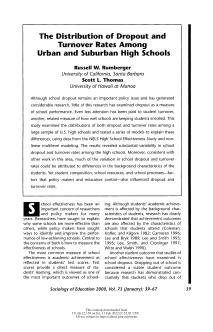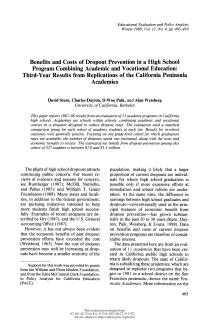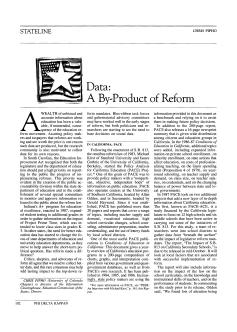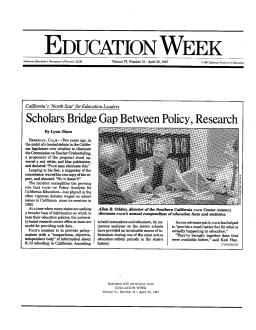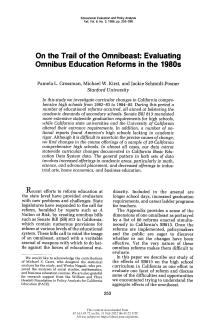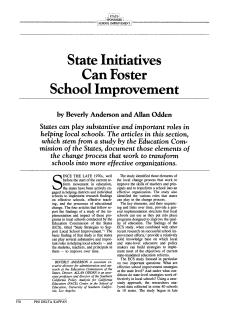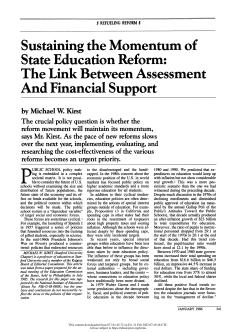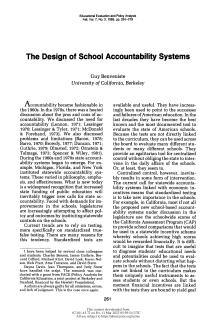Research Center Celebrates a Quarter Century as Leader in Legislative Policy Analysis
Published
Summary
The call for improved education persists annually within PACE, emphasizing the perpetual need for progress. Even with strides made, the organization does not consider its mission accomplished. Guided by three core principles—allocating resources to disadvantaged schools, granting autonomy to local districts, and rigorous evaluation of educational efficacy—PACE remains dedicated to fostering lasting policy reform and enhanced educational performance across California's system. Leveraging experience from Michigan State's Education Policy Center, PACE's leadership continues to drive the...
School Finance and Governance in California
Published
Summary
Getting Down to Facts is an extensive investigation of CA's public education system commissioned by a bipartisan group of CA leaders. The project aimed to describe California's school finance and governance systems, identify obstacles hindering resource utilization, and estimate costs to achieve student outcome goals. The project resulted in 23 reports by scholars, which highlight that the current school finance and governance systems fail to help students achieve state performance goals, particularly those from low-income families. The reports provide a framework for assessing reform options.
How to Judge No Child Left Behind?
Published
Summary
This report analyzes the effects of No Child Left Behind (NCLB) on student performance using three barometers: the National Assessment of Educational Progress (NAEP), state data, and fourth-grade test scores. The authors find that earlier test score growth has largely faded since NCLB's enactment in 2002, and progress made in narrowing achievement gaps in the 1990s has largely disappeared in the post-NCLB era. The report suggests that policymakers need to reconsider the efficacy of NCLB and consider alternative approaches to school reform.
Shaping the Landscape of Equity and Adequacy
Published
Summary
This report focuses on California's school governance system and how it affects schools' ability to provide an adequate and equal education. The author examines who is responsible for ensuring adequate resources, how to assess adequacy, how to determine school performance, and how to address deficiencies. The report argues that California's state-controlled governance system is irrational, incoherent, and limited in efficacy, contributing to substandard school conditions, as seen in the Williams v. California case.
Published
Summary
This article presents a summary of a report prepared for the Williams v. State of California lawsuit, highlighting the achievement gap for English learners in California and seven areas where they receive an inequitable education compared to their English-speaking peers. It also documents the state's role in perpetuating these inequities and proposes remedies to reduce them.
Unequal Resources, Unequal Outcomes
Published
Summary
This article discusses the inequitable education provided to English language learners in California, arguing that there are seven areas where these students receive an inferior education compared to English speakers. That includes having less qualified teachers, inferior curriculum, and being assessed with invalid instruments. The article provides suggestions for addressing these issues.
Constructions of Gender and Sexuality in California’s Single Gender Academies
Published
Summary
This article examines the impact of heterosexist assumptions and homophobia on students' experiences in California's public "Single Gender Academies." Interviews with students reveal a critical link between sexuality, masculinity, and femininity, and the ways in which assumptions about sexuality are embedded in school policies, practices, and peer relations. The article provides an analysis of homophobia among students and the influence of academy assumptions on students' attitudes towards gender and sexuality.
Published
Summary
This paper examines the incidence, causes, and consequences of student mobility in the US. Mobility not only harms the students who change schools, but also the classrooms and schools they attend. The causes and consequences of mobility are more complicated than many people assume. The authors suggest ways for parents, schools, districts, and policymakers to address this growing educational problem.
New Education Policy Center's Goal Is to Be Information Resource for Policymakers and Michigan Educators
Published
Summary
Michigan State University's College of Education has established the nonpartisan Education Policy Center to provide lawmakers and educational leaders with accurate, research-based information to improve the state's educational system. With the support of the university's resources, the center aims to play an important role in deepening the policy debate and bringing about improvements in the system. The center was established due to a lack of systematic communication between researchers and policymakers in Michigan.
How Mothers Balance Work Requirements and Parenting
Published
Summary
This paper examines how mothers select childcare to meet welfare-to-work requirements. Interviews with seven mothers from different ethnic groups show that trust in childcare providers to keep their children safe is the most important criterion. Structural constraints on their choices are also analyzed. The findings suggest that policymakers should focus on trust and legitimacy of childcare providers in addition to supply and educational quality.
Published
Summary
This paper examines high school dropout and turnover rates in the US and tests models to explain the differences using data from the NELS High School Effectiveness Study. Variability was found among high schools, with much of the variation attributed to differences in student characteristics, but factors such as school resources and processes also influenced rates. Dropout and turnover rates are measures of school performance that policymakers and educators can influence.
Third-Year Results from Replications of the California Peninsula Academies
Published
Summary
Evaluation of 11 California high school academies in 1987-88 found positive in-school outcomes. Academies combine academic and vocational courses to reduce dropout rates. Graduation rates available for one grade-level cohort, with an estimated net benefit of $1.0-1.3 million from dropout prevention.
An Exploration of the Debate on School District Size
Published
Summary
The notion that larger school districts are superior has changed, with some researchers advocating for smaller ones. Recent reform reports have focused on the school site as the decision-making seat. Three main issues guide district size research: fiscal efficiency, school effectiveness, and community identity. Although research has been conducted, there is still no definitive answer. This article explores the research and debate on the "right" size for school districts and identifies unanswered questions, hoping to kindle interest in further research.
Second-Year Results from Replications of the California Peninsula Academies
Published
Summary
This article discusses the results of replicating the California Peninsula Academies model in 10 high schools. The model provides technical instruction in an occupational field, alongside core academic curriculum, and is designed to prevent dropouts. Evidence suggests that Academy students performed better in terms of grades and course credits compared to students in comparison groups, particularly at three sites.
A By-Product of Reform
Published
Summary
The Policy Analysis for California Education (PACE) Project provides nonpartisan information to policymakers about California's education system. Their "Conditions of Education in California" report is a yearly benchmark for policymakers. PACE also studies in-depth information on California's education system, including the impact of legislation on schools and the performance of students. Their research is widely distributed among education groups and citizens.
Published
Summary
PACE, a university-based research center, provides "nonpartisan, objective, independent" information on K-12 schooling in CA. Its analyses have been invaluable to lawmakers and educators during the state's active education-reform period. PACE has played a growing role in debates on school issues, exemplified by a heated debate in the CA legislature over the Commission on Teacher Credentialing. PACE offers a model for providing data for education policies when many states are seeking broader information bases. It has helped provide a better understanding of what is happening in education.
Evaluating Omnibus Education Reforms in the 1980s
Published
Summary
The study examines curricular changes in California's high schools from 1982 to 1985, a period of educational reforms aimed at increasing academic rigor. The state mandated more extensive graduation requirements while universities adjusted their entrance requirements. A sample of 20 comprehensive high schools shows increased academic offerings in math, science, and advanced placement, and decreased offerings in industrial arts, home economics, and business education, reflect statewide trends.
Published
Summary
States can help local schools improve by implementing effective school improvement strategies. A study by the Education Commission of the States (ECS) identified key elements that can transform schools into more effective organizations, and various roles that states can play in the change process. The study analyzed data collected in 40 schools in 10 states, providing a solid knowledge base for implementing state-mandated education reforms. Effective strategies and conditions for success were studied using a case-study approach. The study began in late 1983 and was completed in early 1985.
The Link Between Assessment and Financial Support
Published
Summary
Public school policy making is embedded in a complex societal matrix. It is not possible to consider the future of U.S. schools without examining the size and distribution of future populations; the future state of the economy and its effect on funds available for the schools; and the political context within which decisions will be made. The public school system is a "dependent variable" of larger social and economic forces.
Published
Summary
Increased state funding of public education has led to a call for statewide accountability systems. Current trends rely on standardized true-false testing, which can distort what happens in schools when financial incentives are linked with the tests. Teachers are important, and accountability should provide positive encouragement without excessive use of testing. A set of principles and an outline for a statewide accountability system that relies on both top-down and bottom-up accountability is presented.
